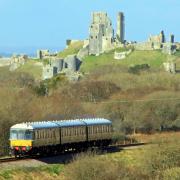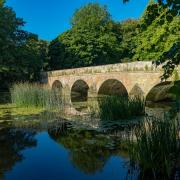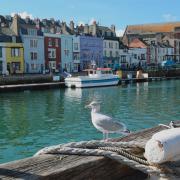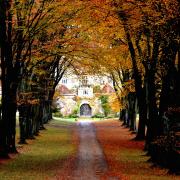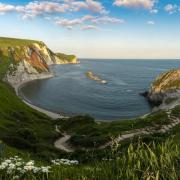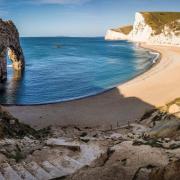Christchurch ...past
No industry seems more unlikely than that which helped put food on the table in Georgian and Victorian Christchurch. A fusee is a tiny chain attached to the mainspring of a watch ensuring it kept even time as it gradually wound down. Christchurch had not one, but three fusee manufacturers. Two employed 200, many of them women outworkers, whilst the less scrupulous third, Robert Harvey Cox, made use of children in the various local workhouses. The combined results of their labours kept the time in clocks and watches as far afield as Liverpool and Birmingham. A blue plaque outside Superdrug in the High Street marks the site of Cox's home and workshops, whilst the local workhouse is now the Red House Museum.
Like other towns dependent on a religious foundation for their prosperity, the century following the Reformation was one of gradual decline for this Hampshire town (it became part of Dorset in 1974). Without the pilgrims who had once crowded the Priory, Christchurch reverted to a small fishing town fringed by the marshes and water meadows of the rivers Avon and Stour. The Civil War saw the destruction of the medieval Castle by Cromwell lest it fall into Royalist hands. An attempt to make the Avon navigable up to Salisbury came to nothing, whilst the shallow waters of the harbour made it increasingly inaccessible as ships' draught deepened.
One trade did flourish, smuggling. No history of the town omits the Battle of Mudeford in 1782, in which a skirmish between a smuggling gang and Customs and Excise, in what is now the car park at Mudeford Quay, led to the death of one Royal Navy officer and the eventual trial and execution of a smuggler. But the potential rewards were immense, for at stake that day were 5,000 casks of French brandy and 400 chests of tea.
When the railway reached Christchurch in 1862, it simultaneously provided Bournemouth with its only station until 1870. Photographs from the period celebrate the arrival of gas street lighting, the first tram from Bournemouth crossing Tuckton Bridge in October 1905, and Christchurch folk going about their business against a backdrop of buildings that have since been demolished to make way for the town's expansion.
Christchurch...present
Local History: A former Georgian workhouse on Quay Road, Red House Museum and Gardens, is the town’s museum which reveals the story of Christchurch from before the Ice Age to 21st century. hampshireculture.org.uk
Priory Views: There’s been a church on the site of Christchurch Priory for over 1300 years. Climb the 176 steps of an ancient spiral staircase to enjoy spectacular views from its tower. christchurchpriory.org
Highcliffe Castle: This Gothic Revival style mansion at nearby Highcliffe was once home to the legendary retail entrepreneur Harry Gordon Selfridge. Visit the house and gardens which host outdoor theatre and concerts. highcliffecastle.co.uk
READ MORE: Christchuch shortlisted for England's best place to live 2023








